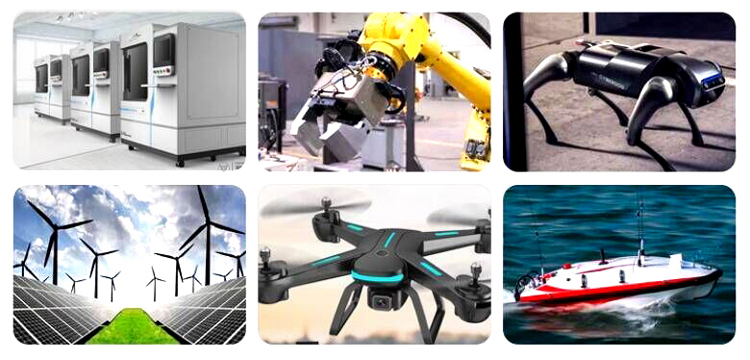Development Trends of DC-DC Converter
As electronic technologies continue to advance and applications diversify at an unprecedented pace, DC-DC converters are becoming increasingly vital in modern power systems. Whether in electric vehicles, renewable energy systems, portable electronics, or industrial automation, these converters enable the efficient transformation of power across different voltage levels. Looking ahead, DC-DC power converters will evolve towards higher efficiency, smaller form factors, smarter control, and broader compatibility.
1. Higher Efficiency: Reducing Loss and Saving Energy
Efficiency improvement remains a central goal in DC-DC converter development. As global energy consumption becomes a critical concern, reducing power loss is paramount. Emerging wide-bandgap semiconductor materials like Gallium Nitride (GaN) and Silicon Carbide (SiC) allow for higher switching frequencies and lower conduction losses, enhancing overall converter performance. Additionally, digital control technologies enable precise regulation of voltage and current, improving dynamic response and minimizing power waste.
2. Miniaturization and Modular Design
With the growing adoption of portable electronics and embedded systems, the demand for compact and integrated DC-DC converters is increasing. Advanced packaging techniques such as 3D integration, system-in-package (SiP), and multi-chip modules (MCM) allow for the consolidation of multiple functions into a smaller footprint, improving thermal performance and space efficiency. Future designs will likely embrace modularity, facilitating rapid deployment and flexible system configuration.
3. Intelligence and Programmability
Smart DC-DC converters are emerging as the new standard. By embedding microcontrollers (MCUs) or digital signal processors (DSPs), these converters can perform real-time power monitoring, fault diagnosis, self-protection, and communicate with external systems via interfaces like I²C, CAN, or PMBus. This programmability and intelligence make them especially suitable for applications in Industrial IoT (IIoT), smart grids, and battery management systems in electric vehicles.
4. Advancement in Topology: Versatility in Design
Beyond traditional step-up (boost) and step-down (buck) DC-DC converters, buck-boost converters are gaining popularity in applications with fluctuating power demands, such as electric vehicle battery systems and mobile devices. These topologies offer flexible input-output relationships, ensuring stable operation across a wide input voltage range. Going forward, the focus will be on improving their efficiency and transient response to meet diverse application needs.
5. Green Energy and Sustainability Demands
With the global push towards green energy and carbon neutrality, DC-DC converters are playing a pivotal role in photovoltaic systems, wind power, and energy storage technologies. To meet these needs, next-generation converters will require enhanced electromagnetic compatibility (EMC), wide input voltage ranges, and long operational lifespans. Moreover, the integration of smart algorithms for energy scheduling will become essential, especially in hybrid renewable systems.


In conclusion, DC-DC converters are set to play an increasingly central role in future electronic systems. Their evolution toward high efficiency, intelligent control, compact design, and versatile topologies is already underway. Whether in automotive electronics, renewable energy, or next-generation communication networks, DC-DC converters will continue to be a key enabler of technological advancement and energy optimization.


